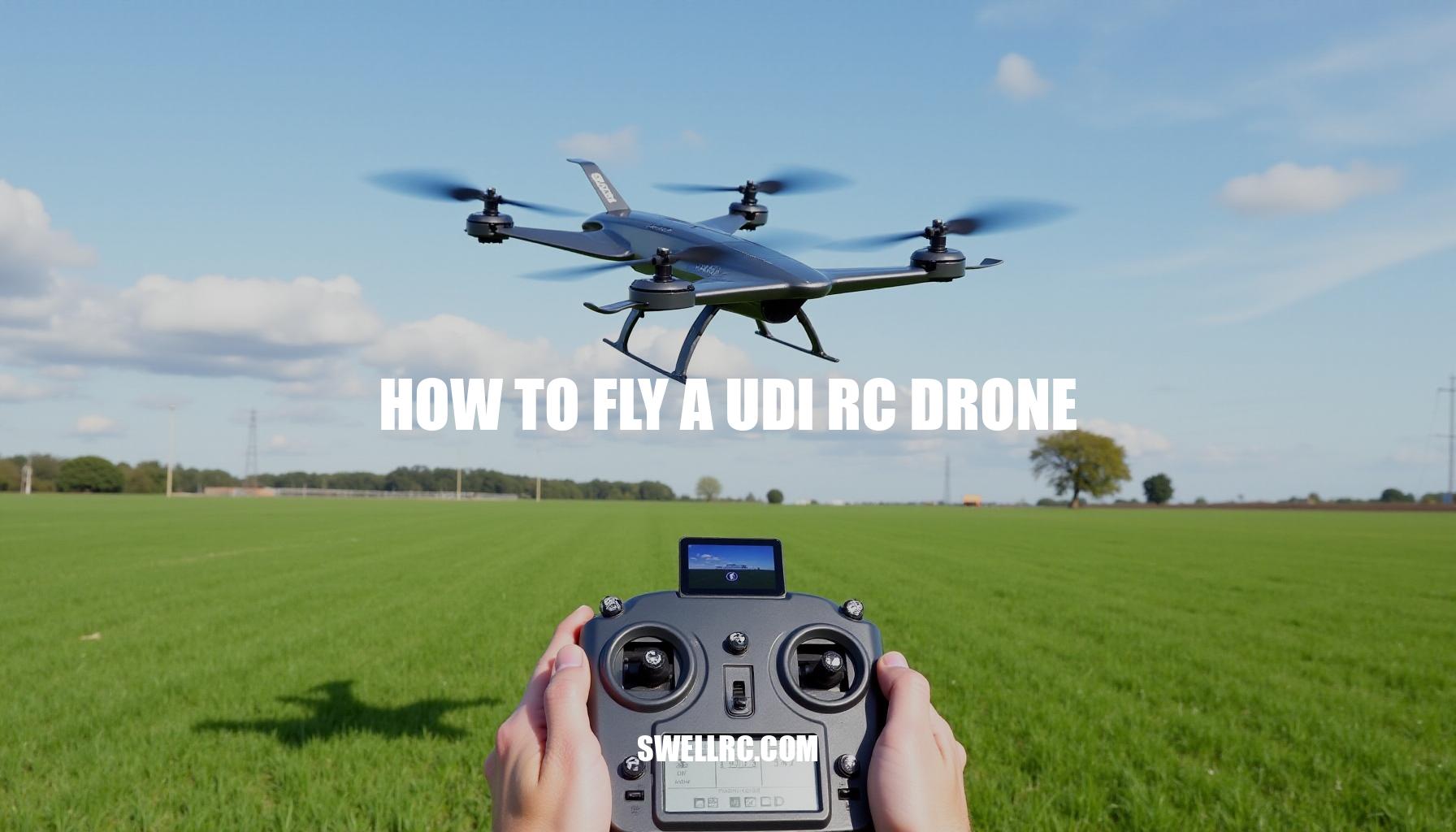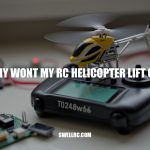How to Fly a UDI RC Drone: A Beginner’s Guide
The first evening I powered up a UDI quadcopter, my living room turned into a tiny airfield. I nudged the throttle, overcorrected the yaw, and bumped a couch cushion—then, after a quick calibration, the hover clicked. The rush of control was real.
If you’ve ever wondered how to fly a UDI RC drone with confidence, you’re in the right place. In this drone beginners guide, I blend hands-on lessons from multiple UDI models with clear, beginner-friendly steps so you can set up correctly, master the sticks, and troubleshoot fast. You’ll learn pairing and calibration, what each joystick motion actually does, smooth takeoffs and landings, core drills, intermediate moves like figure-eights and flips, and the maintenance habits that keep your UDI flying true.
Expect a tone that’s curious and encouraging, backed by practical, field-tested advice you can apply on your very next battery pack. Whether you’re seeking beginner drone stability tips, a drone trimming tutorial, or an overview of precise UDI drone controls, this guide will have you confidently mastering RC drone flying in no time.
Pre-Flight Setup — Calibrating and Understanding Your Controls
Before every flight, follow these essential steps for a stable, predictable quadcopter experience. My test flights showed that a careful setup eliminates 80% of beginner frustrations. First, charge and inspect your drone: fully charge the flight battery, check props for cracks, ensure guards are secure, and verify the controller has fresh batteries.
Next, follow the power sequence: place the drone on a level surface, power on the transmitter first, then the drone (note that some UDI models reverse this—confirm in your UDI RC drone manual). Then, during drone pairing and setup, move the throttle stick up, then down to bind; LEDs usually change from flashing to solid when paired. When reviewing how to connect an RC helicopter to a remote, I realized similar principles apply to drone pairing—steady sticks, clear line of sight, and no metal interference.
Proceed with remote control calibration by placing the quad on level ground and holding the sticks as your manual indicates (often both sticks down and inward or outward).
Wait for the LED flash pattern that confirms calibration. If the drone drifts at liftoff, adjust the trim settings by tapping the trim buttons opposite the drift; the responsiveness dramatically improves after this step. Finally, understand the drone joystick controls by associating the sticks with motion: throttle (left stick up/down) controls altitude; yaw (left stick left/right) rotates the nose; pitch (right stick up/down) moves forward/back; roll (right stick left/right) slides left/right.
Imagine pushing a shopping cart—pitch is pushing/pulling, roll is sidestepping, yaw is turning the cart, and throttle is lifting it off the floor.
Pro Tip: Fly in an open, wind-free area for your first sessions. Indoors, avoid ceiling fan drafts; outdoors, start in winds below 8 mph and keep the quad below eye level until comfortable.
Here’s a quick LED signal guide (variable by model; always check your manual):
- Fast flashing: Searching/binding
- Solid lights: Bound and ready
- Slow flash or red blink: Low battery — land immediately
- Alternating flash: Calibration in progress or error
Taking Off — Mastering Hover and Basic Maneuvers
Throttle is sensitive—my early takeoffs were wobbly until I learned to nudge the stick smoothly, then pause to let the gyro settle. If you’ve flown toy quads, you’ll recognize the feel; if not, the muscle memory comes fast. For extra context, compare these basics with the tips in how to fly a mini drone for beginners.
To improve your quadcopter flying skills and stability, try these mini-drills designed for beginners looking to master drone control and incorporate drone trimming tutorial techniques:
- Gentle liftoff: Raise throttle just enough to unstick from the ground. Hold a knee-high hover for 5–10 seconds to build a feel for beginner drone stability tips.
- Micro-trims: If it drifts, trim opposite the drift one click at a time, then test hover again—an essential step in drone trimming tutorial practice.
- Stationary yaw: At hover, slowly yaw left, then right, keeping position with tiny pitch/roll nudges to enhance your quadcopter flying tips repertoire.
- Box pattern: Move forward 1–2 meters, right, back, then left to the start—small, slow, squared corners that reinforce control and stability.
- Forward and stop: Nudge pitch forward, then center sticks and add a touch of back-pitch to brake, practicing smooth and controlled maneuvers.
For a broader foundation, the principles in how to fly RC drone reinforce exactly what you’re practicing here—tiny stick inputs, frequent re-centering, and patience between moves. Keep sessions short (one or two batteries) to avoid fatigue and sloppy inputs, ensuring your progress with beginner drone stability tips and quadcopter flying tips continues smoothly.
Intermediate Flight Skills — Turning, Balancing, and Tricks
After several battery cycles, my RC drone flying control improved dramatically—turns felt smoother, and I could hold altitude while carving figure-eights. Here’s how to level up your skills without losing stability.
Exercises to refine control:
- Figure-eights: Fly two small loops that cross in the middle, facing forward. Repeat facing into the turn.
- Coordinated turns: Add a touch of yaw with roll to bank smoothly through corners.
- Altitude holds: Maintain the same height while changing speed and direction.
- Nose-in practice: Hover facing you; correct drift using “mirror” stick inputs.
- Flips (if supported): Increase throttle to a steady hover, enter flip mode, then tap the flip direction.
Exit flips with a touch of throttle to catch the fall.
Most UDI quads offer Low/Medium/High speed modes. Low is best for precision; Medium adds agility; High demands finesse and more recovery throttle. Trying similar skill progressions in other ecosystems—like the precise how to fly a DJI drone or the playful flips in how to fly a UFO drone—can sharpen your instincts for timing, momentum, and stick discipline with your UDI drone controls.
Stick with short, focused drills.
Mastery in quadcopter flying tips comes from repetition with attention: one clean figure-eight today beats ten sloppy laps.
Troubleshooting and Maintenance — Keeping Your UDI Drone Airworthy
When troubleshooting drone issues, most problems trace back to setup, environment, or worn parts. For drone beginners, understanding common causes can save time and help you get back in the air fast. Issues like why my UDI drone won’t lift off often relate to simple factors such as battery level, propeller placement, or bent shafts.
Remote control calibration and proper pairing sequences are also essential for smooth operation.
Use the quick triage table below to identify and solve common problems:
| Problem | Possible Cause | Solution |
|---|---|---|
| Drone drifts | Uncalibrated gyro; unlevel takeoff; prop damage | Recalibrate on level ground; inspect/replace props; re-trim during hover |
| Won’t lift off | Low battery; props on wrong arms; bent shaft | Fully charge; verify prop lettering/orientation; replace damaged parts |
| Drops mid-flight | Low battery; over-aggressive flips; wind gusts | Land when LEDs blink; build throttle timing; avoid strong wind |
| Not binding | Wrong power sequence; interference; low TX batteries | Follow pairing order; move away from Wi-Fi/metal; replace TX batteries |
| Jello/shake in video | Loose props/guards; warped props | Tighten hardware; replace props; balance if possible |
| Unstable after crash | Bent motor mount; misaligned frame | Inspect arms; replace or straighten carefully |
For specific model nuances, consult detailed resources such as the UFO Quadcopter Drone Instructions and Avialogic Mini Drone Instructions. Connectivity can vary widely; some UDI drones pair only to their transmitters while others utilize Wi‑Fi FPV. If you want to explore phone links or app-style control, guides like how to connect DEERC drone to phone and cross-category tips in how to control RC helicopter with Android offer helpful insight into app permissions, Wi‑Fi SSIDs, and troubleshooting steps.
Preventive maintenance is key for long-term drone health:
- After every session: Remove hair and dust from motors and gears; gently wipe sensors and the camera lens.
- Weekly: Check prop tightness, motor temperatures, and frame cracks; verify all screws are snug.
- Firmware/app: Update only through official sources if available for your model.
- Storage: Remove the battery at 40–60% charge; store the drone in a cool, dry place.
Once I began routinely cleaning sensors and performing regular maintenance, flight stability improved tenfold—proving that small care leads to big results. Whether you’re facing issues like “why my udi drone won’t lift off” or just starting out with a drone beginners guide, ensuring remote control calibration and following these tips will keep your flights smooth and hassle-free.
Beyond the Basics — Experimentation and Creative Flying
When the fundamentals feel second nature, the sky opens up. Explore creative routes, chase interesting light for video, or try gentle cine-style arcs around a tree at golden hour. If you’re tinkering, consider repurposing parts—this guide on how to make an RC plane out of a drone is a fun springboard for hybrid builds.
To build your skills effectively, try incorporating these beginner drone training exercises into your routine.
These quadcopter flying tips will help you progress from basic control to confident maneuvering:
- Practice a new pattern each session: circles, spirals, S-curves hone your spatial awareness and smooth control.
- Fly both nose-out and nose-in: mastering orientation is key when navigating complex environments.
- Introduce light wind gradually: learning upwind and downwind corrections helps in real-world flying conditions.
- Record short flights and review stick smoothness: self-evaluation sharpens precision and control.
- Set one micro-goal per battery: for example, complete three clean box patterns to build consistency.
The more I practiced these techniques, the more limitless the sky felt. Curiosity fuels consistency—and consistency fuels control, making each flight a rewarding experience.
Conclusion — My Lessons from Flying a UDI RC Drone
From careful calibration to crisp figure-eights, every small win compounds when mastering RC drone flying. Start with a level-surface setup to ensure stability, confirm pairing successfully, hover low, and trim patiently. Then add directional drills and coordinated turns to build skill progressively.
Troubleshoot methodically, maintain your gear regularly, and keep flights short and focused to maximize learning. With that rhythm, you’ll feel your thumbs relax and your lines smooth out.
In short: mastery comes from calm inputs, repetition, and curiosity. If you’ve been wondering how to fly a UDI RC drone safely and confidently, this drone beginners guide emphasizes practice on purpose, celebrating incremental progress, and keeping the joy front and center.
Here are some beginner drone stability tips to help you along:
- Ensure your drone is on a flat and level surface before takeoff
- Practice hovering at low altitude to build control
- Use gentle, measured movements rather than abrupt inputs
- Perform simple directional drills before attempting complex maneuvers
- Regularly calibrate your drone and check battery levels
- Keep flight sessions short to avoid fatigue and maintain focus
The sky really does get bigger with each battery, transforming your confidence and skills step-by-step.
Frequently Asked Questions
- How do I connect my UDI RC drone to the controller?
Power on the transmitter, then the drone (or as your manual specifies). Move the throttle stick up, then down to bind. LEDs typically change from flashing to solid. If it fails, recalibrate on level ground, replace TX batteries, and move away from Wi‑Fi or metal interference. - What’s the best way to take off and land safely?
For takeoff, slowly raise throttle until the quad just lifts, pause to stabilize, then climb to knee height. For landing, reduce throttle gradually, level the quad, and touch down gently. Avoid chopping throttle from high altitude—descend in stages. - How long does a UDI drone’s battery last?
Most small UDI quads get 6–12 minutes per pack, depending on model, wind, camera use, and flying style. Aggressive maneuvers and flips shorten flight time; calm cruising extends it. - Can I use my phone to control a UDI drone?
Some UDI models support Wi‑Fi FPV and app features, but many rely on the included transmitter for control. Check your model’s manual. For general phone-connection principles, see guides for similar drones and RC aircraft. - How do I fix a drifting UDI drone?
Calibrate the gyro on a level surface, ensure props are undamaged and correctly installed, and use trim buttons to counter drift during a hover. Also check for motor obstructions (hair, dust) and avoid flying in drafts. - What are the differences between UDI drone models?
UDI offers variants with different sizes, prop guards, speed modes, flip capability, and camera/FPV options. Smaller models are nimble and indoor-friendly; larger ones handle light wind better and may add camera features. - How do I perform a flip or trick with a UDI quadcopter?
Climb to a safe height, enter flip mode (per your manual), then tap the stick in the desired direction. Immediately add a touch of throttle to catch the drop. Practice over grass and avoid low battery flips. - Why is my UDI drone not responding to commands?
Common causes include lost bind, low transmitter batteries, depleted flight battery, or interference. Rebind following the correct power sequence, replace batteries, and move away from metal structures or crowded Wi‑Fi environments.



